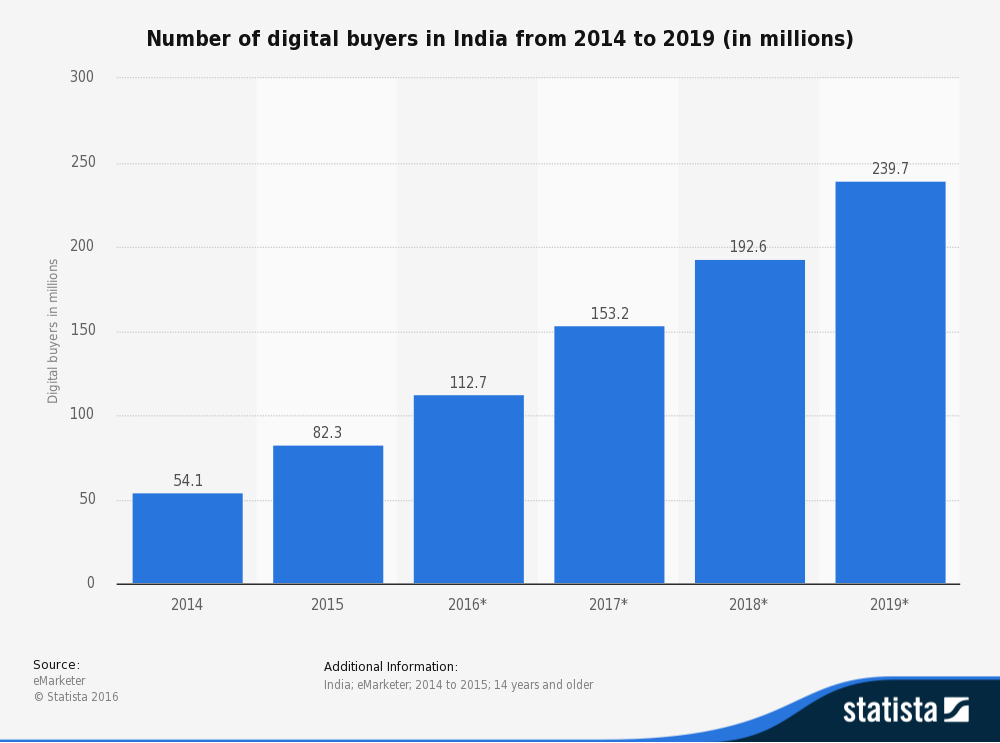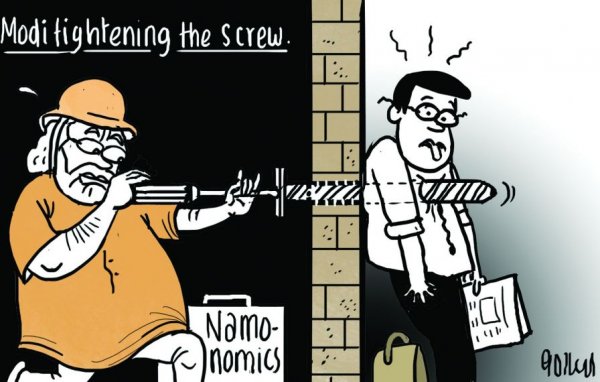India set to be Asia's standout economy as demonetization effect ebbs, HSBC says
Saheli Roy Choudhury |
@sahelirc
Thursday, 12 Jan 2017 | 10:16 PM
India is expected to be one of Asia's standout performers this year, as the growth outlook for the broader region looks challenging due to subdued trade, tighter financial conditions and weak capital expenditure, according to a new report from HSBC.
In a comprehensive report on Asia's outlook for the year, HSBC noted India could grow at an annual rate of 7.1 percent for fiscal 2018 and 7.6 percent for fiscal 2019, shrugging off any lasting effects from
its program to remove 500 and 1,000 rupee bank notes from the financial system in November, labelled demonetization.
The prediction is higher than Asia's average 2017 growth forecast at 4.9 percent; China and the Philippines are expected to grow at 6.5 percent throughout the year, while Indonesia at 5.1 percent.
For the current fiscal year that ends March 2017, growth is expected at 6.3 percent due to the short-term impacts of India's cash crunch, revised down from HSBC's previous prediction of 7.5 percent.
To be sure, India's fiscal 2018 will run from April 2017 to March 2018, while many of its peers use the calendar year to report annual data.
The positive outlook on South Asia's largest economy comes despite India's decision to wipe out 86 percent of the total value of currency in its cash-intensive economy late last year. HSBC's chief India economist, Pranjul Bhandari, noted in the report that investors were confident about India due to a much stronger macro environment.
"Inflation is in single digits, the twin deficits are under control and foreign exchange reserves are at comfortable levels," she said.
Key reforms, and follow-up actions to them, from the government are also on the cards for India in the calendar year 2017, which could lead to further long-term gains. Following the demonetization program, which was aimed at going after so-called black money or undeclared income, economists expect Narendra Modi's government to go after other avenues of black money including real estate, gold and foreign currencies.
The country is also set to implement reforms to replace its byzantine tax structure as early as April, though some market watchers reckon its eventual roll out could be delayed further.
"India is likely to witness two big 'reforms' over the year - the play-out of the demonetization drive and the implementation of the Goods and Services Tax (GST) bill," said Bhandari. "The hope is that both of these are followed up by necessary actions, which are critical to reaping long-term gains."
Meanwhile, Bhandari expects the early days of the GST implementation to be similarly disruptive like they were during the roll-out of the demonetization program.
HSBC's outlook for broader Asia - including Australia and New Zealand - is grim, influenced by expectations for sluggish export demand, tightening financial conditions and weak capital expenditure.
"It appears unlikely that exports will make a sustained recovery this year, or take over as a growth driver at a time when domestic demand continues to slow," said Frederic Neumann, co-head of Asian economic research at HSBC, in the report. He pointed out declines in domestic demand resulted in intra-Asia trade beginning to sputter, while the demand for Asian exports in the West remained subdued.
The possibility of the U.S., under President-elect
Donald Trump, implementing protectionist policies could have an impact on Asian exporters. Trump has previously said he would renegotiate existing free trade agreements, including the NAFTA, and threatened to impose steep tariffs on Chinese imports. Commentators have expressed concerns of possible escalation of a trade war between the U.S. and China, which would have broader impact on the rest of the world.
"Protectionist sentiment is strengthening, not just in the U.S. but elsewhere as well, raising the risk that restrictive measures may be increasingly adopted unilaterally," Neumann said.
Due to the challenging outlook for exports and a slowdown in domestic demand, HSBC expects capital expenditure to remain weak.
There are several factors affecting companies' decisions to invest, including the rise in protectionist rhetoric, tricky political calendars postponing tough domestic reforms and the weakening of Asian currencies against the
dollar pushing up funding costs for local firms.
Meanwhile, rising U.S. interest rates have also resulted in capital outflows from Asia, after the
Federal Reserve raised interest rates in December and projected as many as three rate hikes for 2017.
"For a region highly reliant on credit growth, the resulting tightening of financial conditions is a challenge...one that may grow over the coming year," Neumann noted.
Elsewhere in China, the world's second largest economy has demonstrated signs of stabilization, supported by recent economic data. Last year, local government in the country announced a series of property market cooling measures in a bid to address concerns of a real estate bubble.
According to reports, several cities
tightened rules for home purchases, including an increase in the initial payments new homeowners need to make to book their homes.
HSBC economists Qu Hongbin and Julia Wang said in the report they expect more policies from Beijing in 2017 aimed at containing property prices in major cities. Overall, they expect Chinese policy to remain expansionary.
http://www.cnbc.com/2017/01/12/indi...7-percent-growth-in-fiscal-2018-and-2019.html


